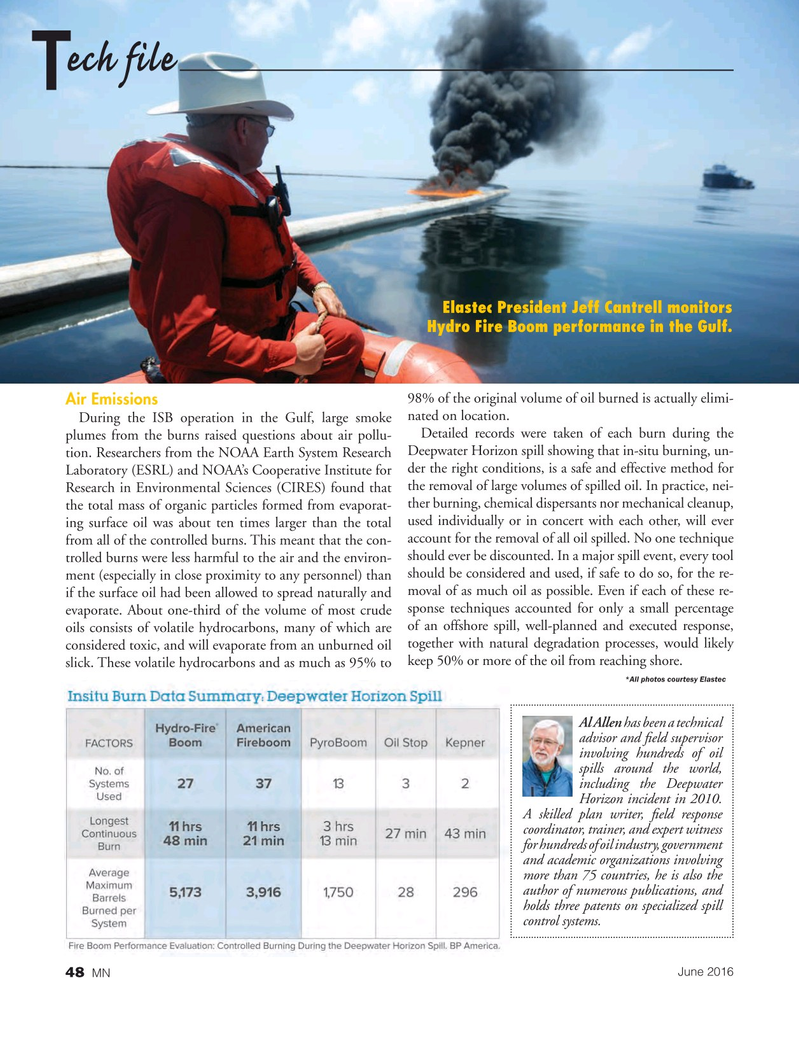
Page 48: of Marine News Magazine (June 2016)
Combat & Patrol Craft Annual
Read this page in Pdf, Flash or Html5 edition of June 2016 Marine News Magazine
ech file
T
Elastec President Jeff Cantrell monitors
Hydro Fire Boom performance in the Gulf.
98% of the original volume of oil burned is actually elimi-
Air Emissions
During the ISB operation in the Gulf, large smoke nated on location.
Detailed records were taken of each burn during the plumes from the burns raised questions about air pollu- tion. Researchers from the NOAA Earth System Research Deepwater Horizon spill showing that in-situ burning, un-
Laboratory (ESRL) and NOAA’s Cooperative Institute for der the right conditions, is a safe and effective method for
Research in Environmental Sciences (CIRES) found that the removal of large volumes of spilled oil. In practice, nei- ther burning, chemical dispersants nor mechanical cleanup, the total mass of organic particles formed from evaporat- ing surface oil was about ten times larger than the total used individually or in concert with each other, will ever account for the removal of all oil spilled. No one technique from all of the controlled burns. This meant that the con- should ever be discounted. In a major spill event, every tool trolled burns were less harmful to the air and the environ- ment (especially in close proximity to any personnel) than should be considered and used, if safe to do so, for the re- if the surface oil had been allowed to spread naturally and moval of as much oil as possible. Even if each of these re- evaporate. About one-third of the volume of most crude sponse techniques accounted for only a small percentage oils consists of volatile hydrocarbons, many of which are of an offshore spill, well-planned and executed response, considered toxic, and will evaporate from an unburned oil together with natural degradation processes, would likely slick. These volatile hydrocarbons and as much as 95% to keep 50% or more of the oil from reaching shore.
*All photos courtesy Elastec
Al Allen has been a technical advisor and ? eld supervisor involving hundreds of oil spills around the world, including the Deepwater
Horizon incident in 2010.
A skilled plan writer, ? eld response coordinator, trainer, and expert witness for hundreds of oil industry, government and academic organizations involving more than 75 countries, he is also the author of numerous publications, and holds three patents on specialized spill control systems.
June 2016 48 MN
MN June16 Layout 32-49.indd 48 5/17/2016 10:45:16 AM

 47
47

 49
49
